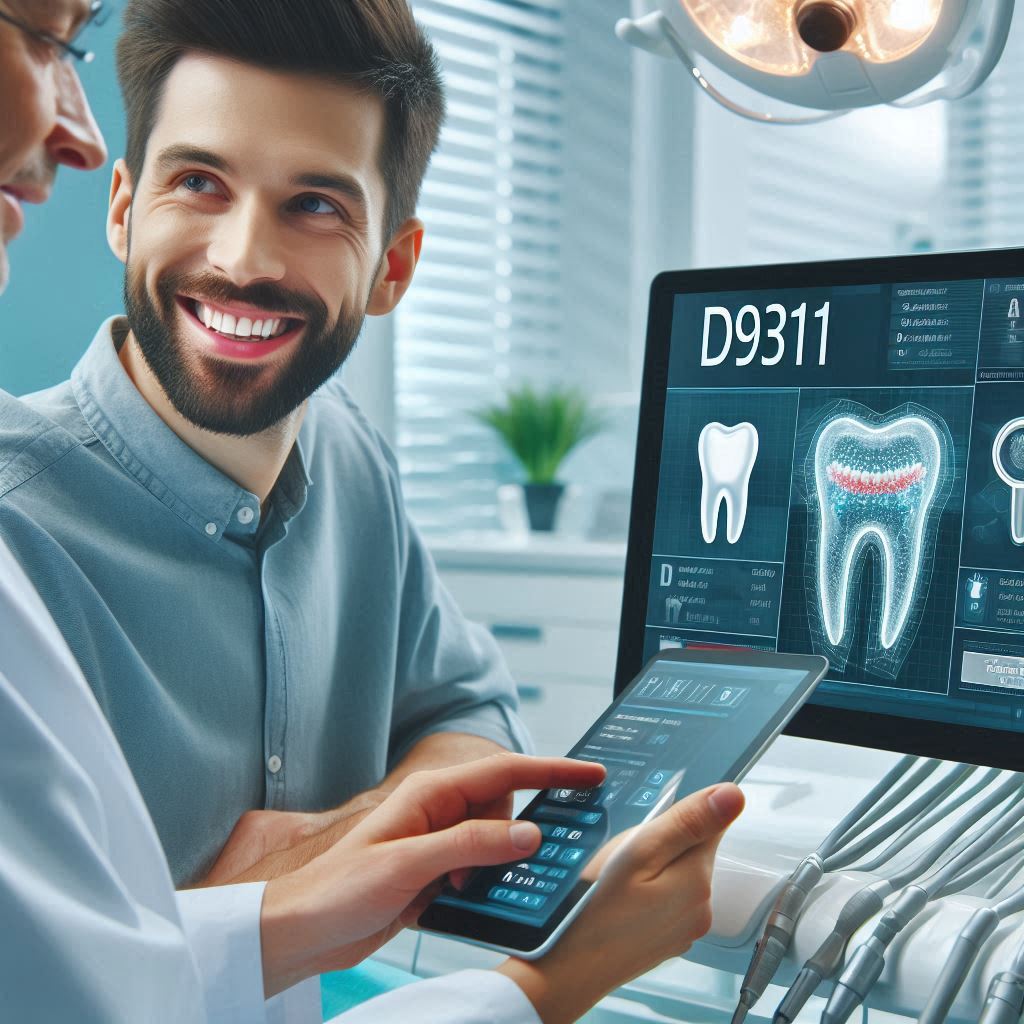D9311 Dental Code: Consultation with a Medical Professional
In the ever-evolving field of dentistry, accurate coding is essential for proper billing, insurance claims, and patient care. One such code, D9311, plays a crucial role in dental consultations involving medical professionals. Whether it’s coordinating care with a physician for a patient with systemic conditions or discussing oral implications of medical treatments, D9311 ensures proper documentation and reimbursement.
This comprehensive guide will explore what D9311 entails, when and how to use it, billing best practices, insurance considerations, and real-world case studies. By the end, dental professionals will have a clear understanding of this code’s applications and how to maximize its benefits.

2. What Is the D9311 Dental Code?
D9311 is a dental procedure code defined by the American Dental Association (ADA) as:
“Consultation with a medical health care professional—A consultation with a physician or other qualified health care professional, requested by the dentist, regarding the patient’s medical condition that may affect the patient’s dental treatment.”
Unlike standard dental visit codes (e.g., D0140 for limited oral evaluation), D9311 is specifically used when a dentist seeks medical advice from another healthcare provider to ensure safe and effective dental treatment.
Key Features of D9311:
- Used for interprofessional consultations (dentist to physician).
- Not for routine dental check-ups.
- Requires documentation of medical necessity.
3. When Is D9311 Used in Dental Practice?
D9311 is applicable in various scenarios where a patient’s medical condition impacts dental care. Common use cases include:
A. Patients with Complex Medical Histories
- Cardiovascular conditions (e.g., need for antibiotic prophylaxis).
- Diabetes management (impact on healing and infection risk).
- Immunosuppressed patients (e.g., cancer therapy, HIV).
B. Medication-Related Consultations
- Bisphosphonates (risk of osteonecrosis of the jaw).
- Anticoagulants (bleeding risks during extractions).
- Chemotherapy or radiation impacts on oral health.
C. Pre-Surgical Clearance
- For patients requiring major oral surgery who have underlying conditions (e.g., heart disease, bleeding disorders).
4. Key Differences Between D9311 and Other Consultation Codes
| Code | Description | When to Use |
|---|---|---|
| D9311 | Consultation with a medical professional | When a dentist consults a physician about a patient’s medical condition affecting dental care. |
| D0140 | Limited oral evaluation (problem-focused) | For assessing a specific dental issue, not medical consultation. |
| D0150 | Comprehensive oral evaluation | Full dental exam, not involving medical professionals. |
| D0160 | Detailed and extensive oral evaluation | For complex dental diagnoses, not medical consultations. |
Why D9311 is Unique:
- Involves collaboration between dentist and physician.
- Focuses on medical-dental interplay, not just dental issues.
5. Billing and Reimbursement for D9311
A. Documentation Requirements
- Referral note explaining the reason for consultation.
- Physician’s response with recommendations.
- Patient’s medical records supporting the necessity.
B. Insurance Coverage
- Medicare/Medicaid: Often covers if medically necessary.
- Private insurers: Varies—some require pre-authorization.
- Reimbursement rates: Typically lower than procedural codes.
C. Common Denials & How to Avoid Them
- Lack of medical necessity documentation → Include detailed notes.
- Incorrect coding → Ensure D9311 is used only for physician consultations.
- Duplicate billing → Do not bill if the consultation was part of another service.
6. Case Studies: Real-World Applications of D9311
Case 1: Diabetic Patient with Periodontal Disease
- Issue: Uncontrolled diabetes delaying healing after extraction.
- Action: Dentist consulted endocrinologist (D9311) for glycemic control.
- Outcome: Improved healing post-treatment.
Case 2: Patient on Blood Thinners Needing Extraction
- Issue: Risk of excessive bleeding.
- Action: Dentist consulted cardiologist (D9311) for anticoagulant adjustment.
- Outcome: Safe procedure with minimal bleeding.
7. Best Practices for Dentists Using D9311
✔ Maintain thorough documentation of all consultations.
✔ Communicate clearly with physicians to ensure coordinated care.
✔ Verify insurance policies before billing.
✔ Educate staff on proper usage to prevent coding errors.
8. Future Trends in Dental Consultation Coding
- Increased integration of electronic health records (EHRs) for seamless dentist-physician communication.
- AI-assisted coding tools to minimize errors.
- Expanded telehealth consultations for faster medical-dental coordination.
9. Conclusion
The D9311 dental code is essential for interprofessional consultations, ensuring safe dental care for medically complex patients. Proper documentation, accurate billing, and clear communication with physicians are key to maximizing its benefits. As healthcare becomes more integrated, D9311 will continue to play a vital role in patient-centered care.
10. FAQs
Q1: Can D9311 be billed for a routine dental check-up?
No, D9311 is strictly for consultations with medical professionals regarding medical conditions affecting dental treatment.
Q2: Does insurance always cover D9311?
Coverage varies; some insurers require pre-authorization or proof of medical necessity.
Q3: How should dentists document D9311 consultations?
Include referral notes, physician responses, and relevant medical records.


